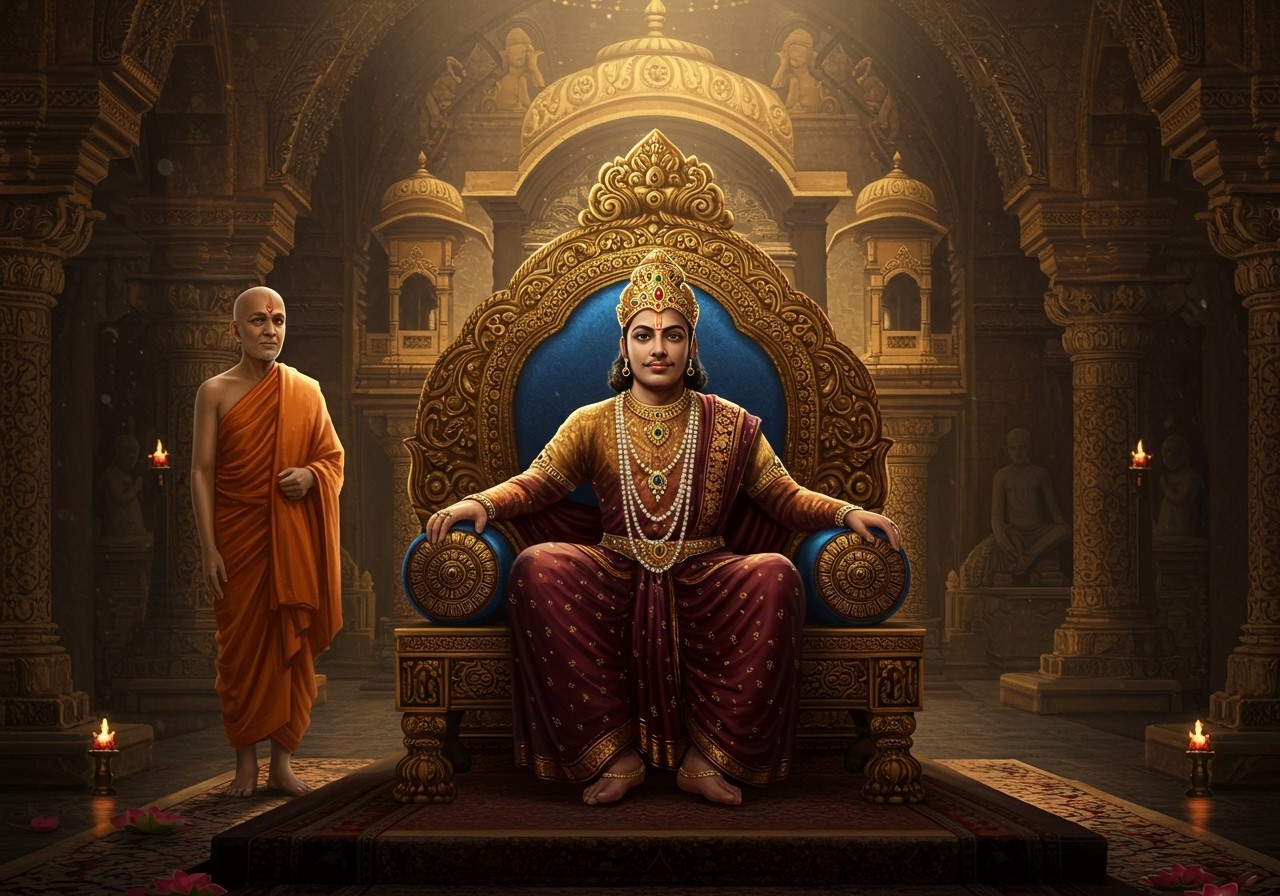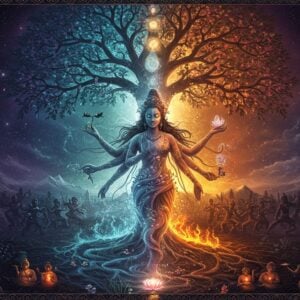
In the heart of India, every stone tells a story, and every tradition carries the wisdom of ages. The medieval history of Gujarat shines brightly with the tales of the Kumarapala-Chaulukya Dynasty, a period of incredible cultural prosperity and architectural genius. For those of us who cherish our deep-rooted traditions, understanding this dynasty’s impact is like reconnecting with a vital part of our own identity. Let’s take a journey back in time to explore the life and legacy of its most celebrated ruler, Kumarapala.

Who Was the Great King Kumarapala?
Kumarapala, a revered king of the Chaulukya (also known as Solanki) dynasty, ruled from Anahilapataka, which we know today as Patan. His reign, from 1143 to 1172 CE, is often remembered as a time of great justice and spiritual awakening. But his path to the throne was anything but easy. Imagine a young prince living in exile, facing constant threats from his own relative, the powerful king Jayasimha Siddharaja. Kumarapala’s early life was a test of patience and resilience. It was only after Jayasimha’s passing that, with the help of his brother-in-law, he could claim his rightful place as king.
A Ruler of Might and Wisdom
Kumarapala was not just a king by birth; he was a leader forged in hardship. This made him a brilliant strategist and a formidable warrior. His reign was marked by a series of military victories that didn’t just expand his kingdom but also brought peace and security to the people.
- Establishing Dominance: He skillfully subdued neighbouring kings like Arnoraja of the Chahamana dynasty and Mallikarjuna of the Shilahara dynasty. These victories cemented the Chaulukya dynasty’s position as a dominant force in Western India.
- Strategic Expansion: His triumph over King Ballala led to the annexation of the Malwa region, a territory rich in resources and strategic importance. By 1151, his authority was respected as far as the mighty fortress of Chittor. His rule was a perfect blend of military strength and wise governance that allowed his kingdom to prosper.
A Spiritual Journey: The Embrace of Jainism
Though born into a Shaivite family, Kumarapala’s heart underwent a profound transformation, drawing him towards the principles of Jainism. He became one of its greatest royal patrons, and under his rule, the philosophy of ahimsa (non-violence) and compassion flourished throughout Gujarat. Jain texts lovingly portray him as the last great royal sponsor of Jainism, a truly righteous king.
It is said that he introduced policies against animal slaughter, alcohol, and gambling, promoting a more moral and compassionate society. While he deeply respected all Indian religious traditions, his personal devotion to Jainism helped preserve its philosophy, arts, and scriptures for generations to come. This spiritual leaning shaped the very soul of Gujarat, instilling values that are cherished even today.

Carved in Stone: The Architectural Marvels of His Reign
Many of us often wonder about the magnificent structures left behind by such great dynasties. The reign of Kumarapala was a golden age for temple architecture. A true lover of the arts, he commissioned the construction of countless Brahminical and Jain temples that stand as a testament to his vision.
- Grand Temples: In 1169 CE, he commissioned a grand temple at the sacred site of Somanatha. He also built the Kumar Kapaleeshwar temple and lovingly restored the Kedareshwar temples in his capital.
- Jain Viharas: His devotion to Jainism was immortalised in stone with the construction of the Kumara-vihara, a beautiful temple dedicated to Parshwanath. These temples were not just places of worship; they were vibrant centres of culture, art, and learning.
The architectural styles promoted during his era were so profound that they influenced temple construction for centuries. And yes, many of these incredible structures and their remnants still stand today, allowing us to touch a piece of that glorious history. To bring a touch of that ancient grandeur and sanctity into your own home, you can explore the beautiful collection of decorative items and holy idols at Poojn.in, each piece crafted with reverence for our traditions.
The Enduring Legacy of a Visionary King
So, why is Kumarapala still considered such an important figure in Indian history? Because his legacy is one of perfect balance. He showed that a ruler could be a powerful warrior and a compassionate, spiritual guide. His reign was a period of economic growth and immense cultural blossoming, enriching Indian culture in countless ways.
He created a kingdom where moral conduct and wise leadership were valued above all. His support for Jainism helped its gentle philosophy spread far beyond Gujarat, leaving a lasting spiritual impact on Western India. The legacy of Kumarapala and the Chaulukya Dynasty is visible in the intricate sculptures, ancient manuscripts, and magnificent temples that continue to inspire awe and devotion.
Connecting with our rich heritage is a deeply personal and fulfilling journey. While we may not live in the age of kings, we can honour their legacy by upholding the traditions they cherished. For all your spiritual needs, from daily rituals to special ceremonies, Poojn.in provides a complete range of authentic pooja samagri. We are here to help you keep these sacred traditions alive, with the convenience and trust you deserve.


